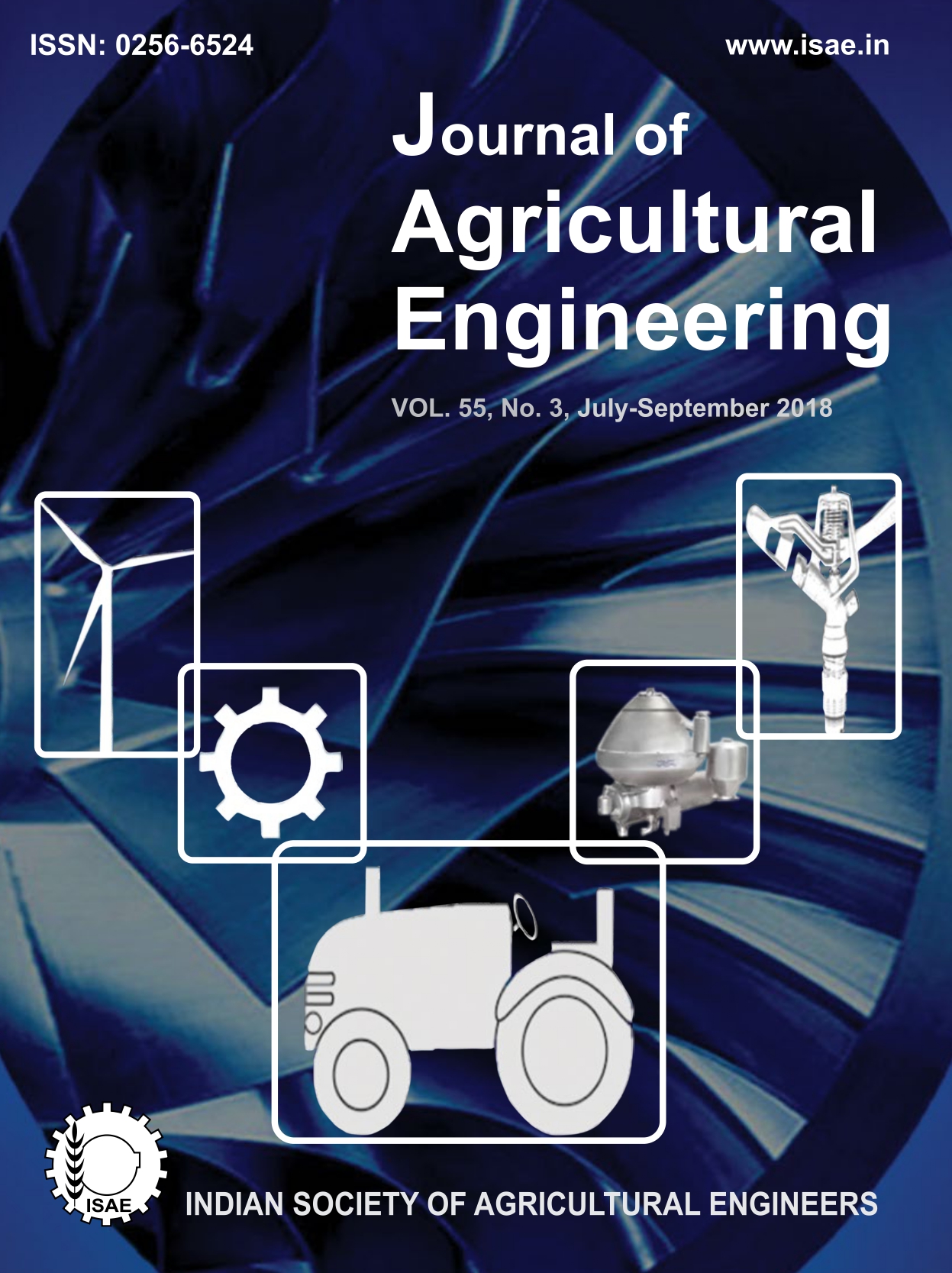Sorption Study on Developed Low-cost Solid Desiccant Material for Solar Dryer
DOI:
https://doi.org/10.52151/jae2018553.1661Keywords:
Bentonite - CaCl2 desiccant, solar drying, regeneration, adsorption, desorptionAbstract
A study was attempted to develop a solar regenerative Bentonite - CaCl2 based solid desiccant material, and examine it's moisture sorption performance and regeneration characteristics. The desiccant was developed from 60 % bentonite, 20 % vermiculite, 10 % CaCl2 and 10 % cement. Regeneration studies on the desiccant were carried out for moisture adsorption at 30 °C and 96 % R.H. for 144 h; and moisture desorption at 40 °C, 50 °C, 60 °C, 70 °C and 80 °C for 8 h. Regeneration temperature and time significantly affected the moisture sorption and desorption of the solid desiccant, and their combined impact was meaningful (p ≤ 0.05). Maximum adsorption capacity of the desiccant was 35.12 % (d.b.), and was efficiently regenerated by solar energy
References
Ahmad A; Saini J S; Varma H K. 1991. Thermo-hydraulic performance of packed bed solar air heaters. Solar Energy, 47 (2), 59–67.
AOAC. 2000. Official Methods of Analysis (984.25). XVII Ed., Association of Official Analytical Chemists, Maryland.
Fagunwa A O; Koya O A; Faborode M O. 2009. Development of an intermittent solar dryer for cocoa beans. Agric. Eng. Int. CIGRJ, XI, Manuscript No. 1292.
Fudholi A; Sopian K; Ruslan M H; Alghoul M A; Sulaiman M Y. 2010. Review of solar dryers for agricultural and marine products. Renew. Sust. Energy Rev., 14, 1–30.
Jangam S V; Mujumdar A S. 2010. Basic Concepts and Definitions. Drying of Foods, Vegetables and Fruits, Singapore, 1, 1–30.
Miller M W. 1985. Solar drying coupled with solid desiccant energy storage. Trans. ASAE, 28(2), 649-656.
Misha S; Mat S; Ruslan M H; Salleh E; Sopian K. 2015. Performance of a solar assisted solid desiccant dryer for kenaf core fiber drying under low solar radiation. Solar Energy, 112,194–204.
Pramuang S; Exell R H B. 2007. The regeneration of silica gel desiccant by air from a solar heater with a compound parabolic concentrator. Renew. Energy, 32(1), 173–182.
Shanmugam V; Natarajan E. 2007. Experimental study of regenerative desiccant integrated solar dryer with and without reflective mirror. Appl. Therm. Eng., 27(8–9), 1543–1551.
Singh S; Singh P P. 1998. Regeneration of silica gel in multi-shelf regenerator. Renew. Energy, 13(1), 105-119.
Techajunta S; Chirarattananon S; Exell R H B. 1999. Experiments in a solar simulator on solid desiccant regeneration and air dehumidification for air conditioning in tropical humid climate. Renew. Energy, 17, 549–568.
Thoruwa T F N; Johnstone C M; Grant A D; Smith J E. 2000. Novel low cost CaCl2 based desiccants for solar crop drying applications. Renew. Energy, 19(4), 513-520.














